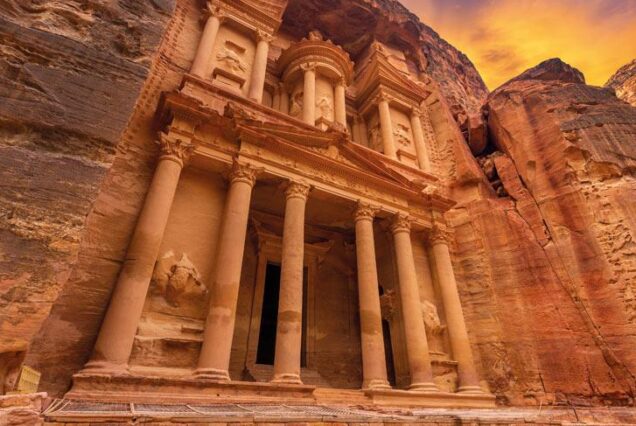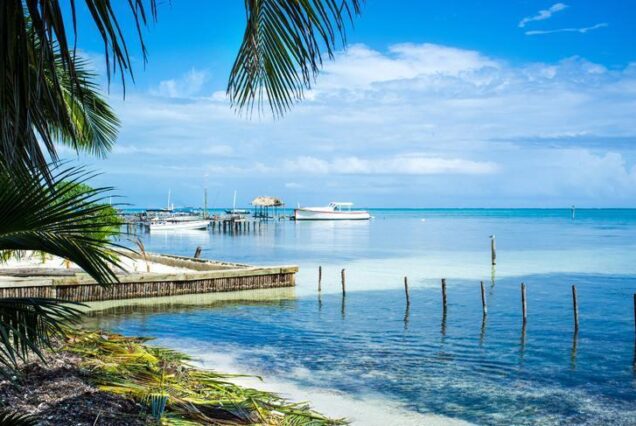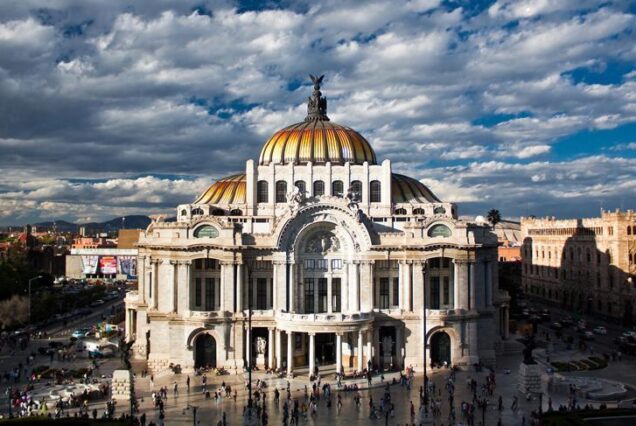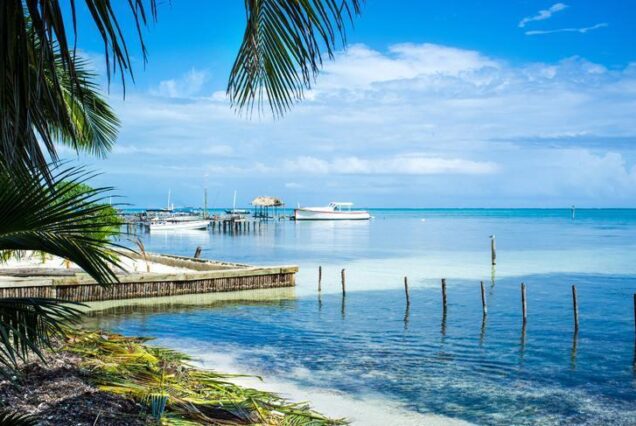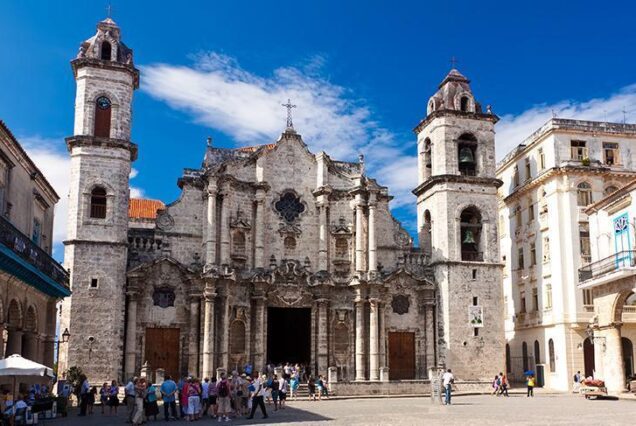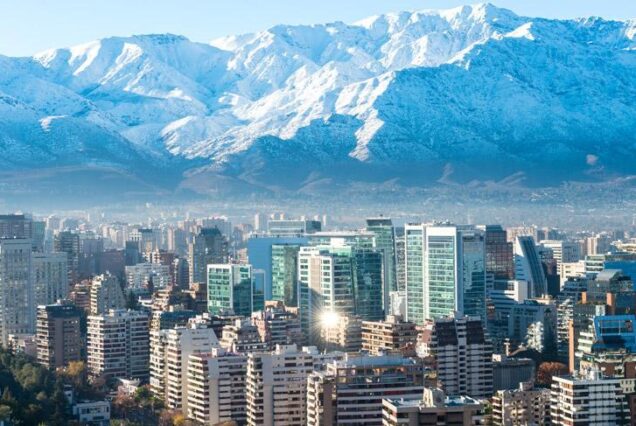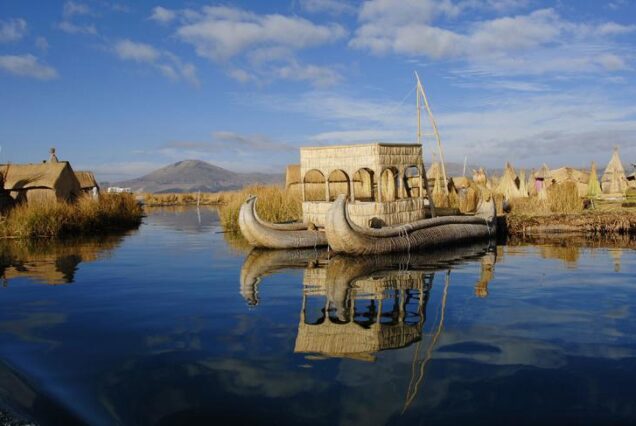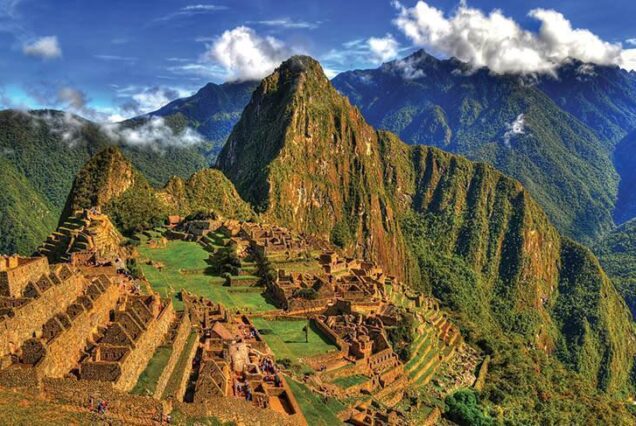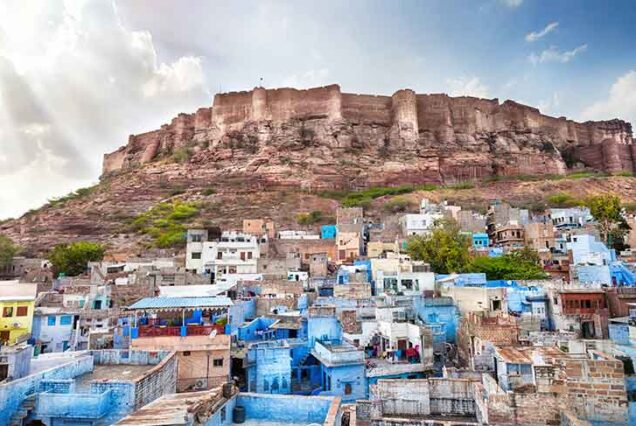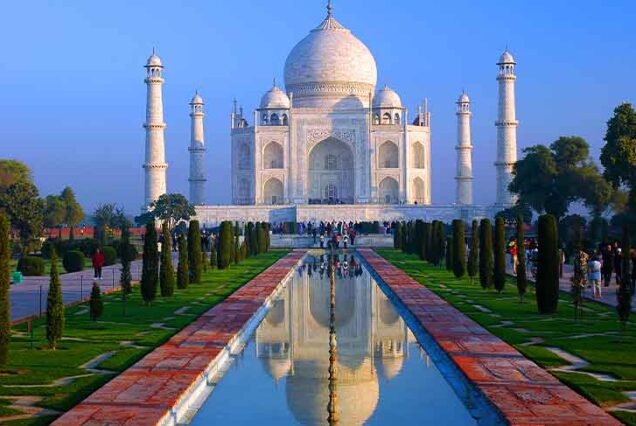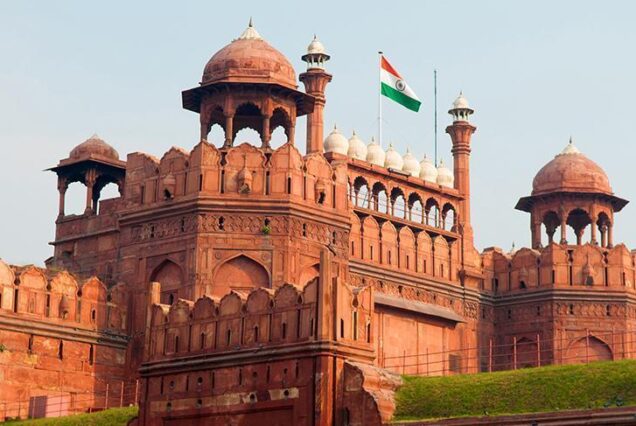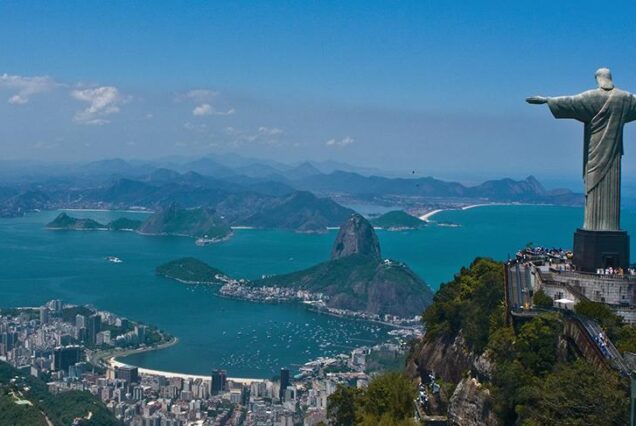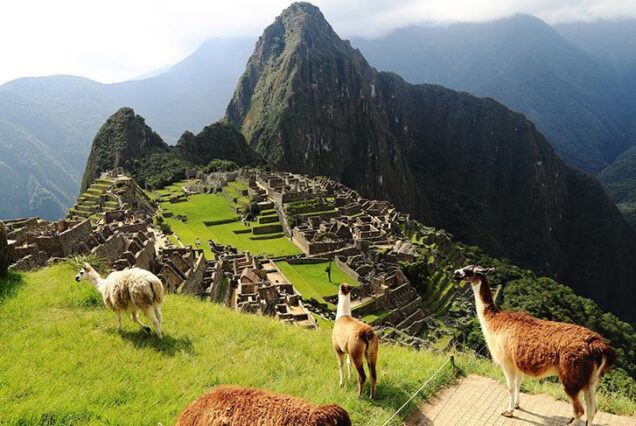This website uses cookies so that we can provide you with the best user experience possible. Cookie information is stored in your browser and performs functions such as recognising you when you return to our website and helping our team to understand which sections of the website you find most interesting and useful.
The New 7 Wonders of the World
Taking the lead from the 7 Ancient Wonders of the World, Swiss philanthropist Bernard Weber believed that it might be time for a new list. (After all, the 7 ancient wonders was compiled in the 2nd Century BCE!) So he set up the New Seven Wonders Foundation which created a campaign to invite the public to vote on what they thought should be in the list for the New Seven Wonders of the World. 100 million people took part, but do you agree with the results? Some believe that this list is even more wondrous than the original – we’ll leave that up to you to decide. But it does seem to inspire a longer lasting awe when we can actually see the sites with our very own eyes! All of these places have long held top spots as best bucket list destinations, so if you ever find yourself in one of these countries, be sure to check them out.
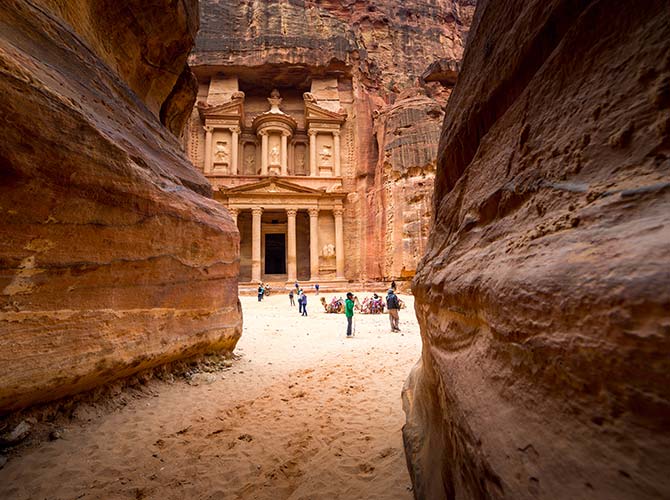
1. Petra, Jordan
The ancient city of Petra is shrouded in mystery and legend. A very important biblical location, it is supposedly one of the places where Moses struck a rock to allow water to flow to the Israelites. One of the most mysterious things about Petra is that we have only discovered around 15% of the ancient city – the rest still remains untouched, somewhere underground…
At around 312 BCE, a secretive Arab tribe, the Nabataeans, settled in Petra to carve out an extraordinary city in a 3 – 6 meter crack of the delicate sandstone rock. Why carve out such an extraordinary city, extravagant monuments and incredible temples where no one can see them? One of life’s great mysteries! During this time the city flourished. The Nabataeans built a water system to service the elaborate gardens and farms making Petra a key stop on the spice trade route.
Tours to Jordan
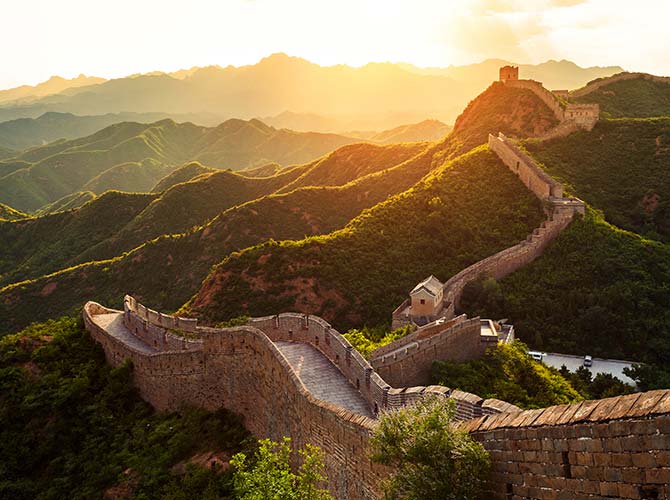
2. The Great Wall of China
The iconic symbol of the country, the great wall of China, is definitely the wonder which takes up the most space! You can try and walk it if you like but being over 5,500 miles long, it may take a while! The wall runs across 9 provinces from western China to the China / North Korea border, however most people tend to visit sections just outside of Beijing.
Construction began in the 7th century BCE and continued for nearly 1800 years! Great is the size, great it the determination to finish it, but the word great doesn’t quite fit when it comes to effectiveness. The intention of building the wall was to prevent attacks and invasions, however it failed to provide any actual safety to China.
3. Colosseum, Italy
Built over 1,900 years ago, the Colosseum in Rome is one of the most visited landmarks in the world and the largest amphitheatre ever built. This huge amphitheatre measures 620 by 513 feet (about the height of a 12 storey building!) and has a staggering capacity of 50,000.
Back in its heyday, the Colosseum was used for various events from theatre productions to exquisite displays of exotic animals. However, it is mostly remembered for the brutal gladiator fights. It is said that an estimate of 500,000 people died there and around 10,000 animals were often killed in a single day! This impressive structure took around 8 years and over 50,000 slaves to build. Even though only about a third of the original building remains, it still ignites a rich sense of awe to anyone who visits the ‘Eternal City’.
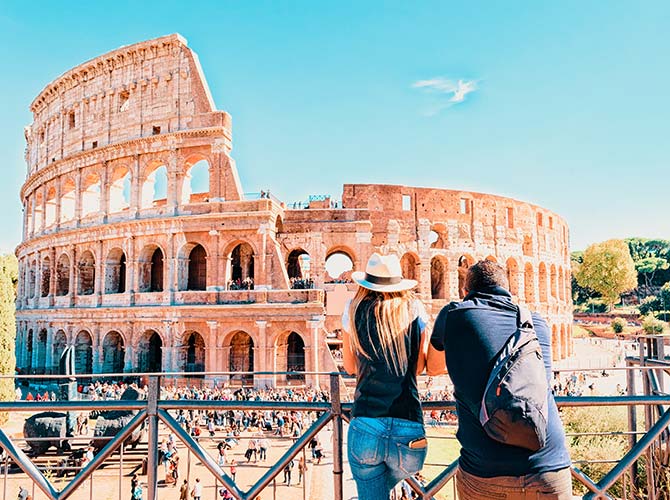
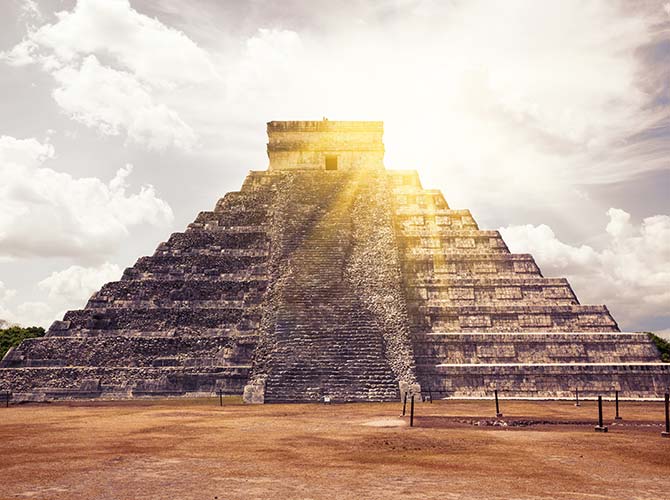
4. Chichen Itza, Mexico
The Mayans are one of the most intriguing, advanced civilisations our world has seen, with the Chichen Itza being one of their most well-preserved ruins. Situated in the Yacatán peninsula, this collection of ‘time temples’ shows the extraordinary, astronomical understanding the Mayans had.
Many of the temples were built purely to record astronomical events and the positioning of the sun. The Chichen Itza temple for example, aligns with the position of the sun during the summer and winter equinoxes and also marks the northern point of Venus. Their structures were so well built that when the sun hits the right point in the sky, it casts a shadow across the stairs of the pyramid ‘El Castillo’ – giving the shape of a snake, slithering towards the temple at the top.
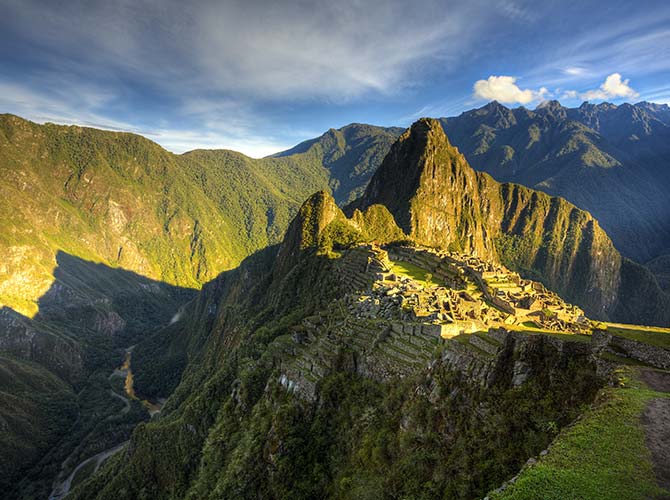
5. Machu Picchu, Peru
Machu Picchu has long taken a high spot on many bucket lists, and for good reason! This high-altitude hike explores the ‘Lost City of the Incas’, one of the few settlements that remains intact. Built around the 15th century, it is thought that the settlement was constructed as a royal retreat for the Incan Empire. The engineering of the site still baffles archeologists today. The incredible Incan Empire somehow managed to construct their buildings using no mortar at all. The stones were cut and sandwiched together so tightly that when an earthquake occurs (which they do quite a lot in Peru!), the stones simply bounce, then fall back into place. Genius!
To reach Machu Picchu, many people take on the famous Inca Trail 7 day trek, or hop on a train for one of the most beautiful journeys in the world. Once you reach the site you can see the remains of the sacred sun-dial, the circular tower, the main plaza and the royal quarters.
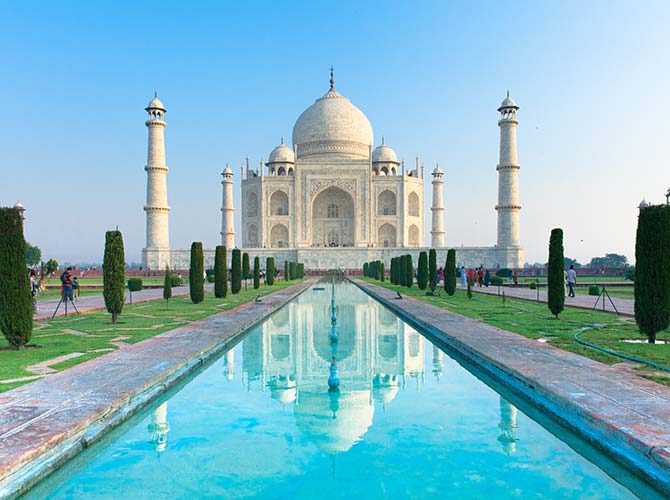
6. Taj Mahal, India
The Taj Mahal in Agra is one of the most beautiful structures in the world and an icon which has become synonymous with India. This labour of love took 22 years, 20,000 people and about 1,000 elephants to build, finally being completed in 1653. The Emperor Shah Jahan commissioned the build to honour his beloved wife who unfortunately died after giving birth to their 14th child!
The Taj Mahal is possibly the best and most astounding example of Mughal architecture on earth. Made of ivory marble, with embedded semi-precious stones, the four sides of the mausoleum have a near-perfect symmetry which is reflected in the long stretch of pond leading towards the entrance. If you want to see the Taj Mahal in all its glory, it’s best to visit at sunrise or sunset and sit in the tranquil gardens watching as the sun perfectly illuminates the ivory white of the building.
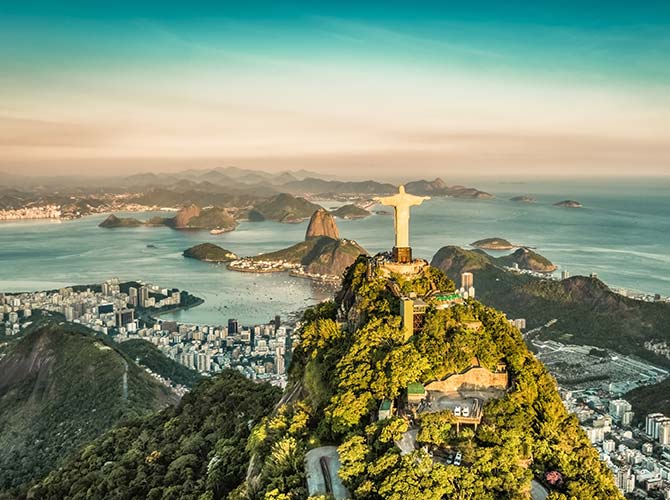
7. Christ the Redeemer, Brazil
Now a national symbol of Brazil, the Christ the Redeemer statue stands at an astonishing 2,300 feet tall – the largest Art Deco sculpture in the world. It’s so tall in fact that it gets struck by lightning about 5 times a year! Perched high on Mount Corcovado in Rio de Janeiro, the view upon reaching Christ the Redeemer is simply out of this world.
Amazingly, the entire build of the statue was funded by donations received from Brazilian Catholics after World War One, when the people of Brazil became concerned about crime and sin in the area. The statue is so large that it took nearly 6 million tiles to cover it, which were applied by devout women, many of whom wrote messages, names and prayers on the back of each tile. It took 5 years to build and was completed by 1926, making it the most recent of the New 7 Wonders of the World.
We are passionate adventure travelers who want to share the world and our travel experiences with everyone…
